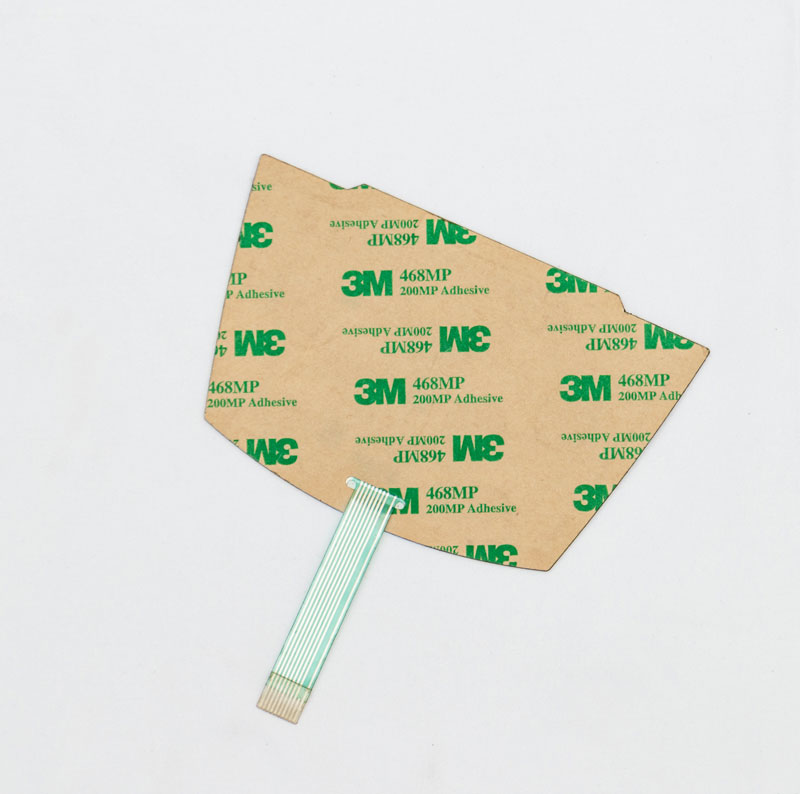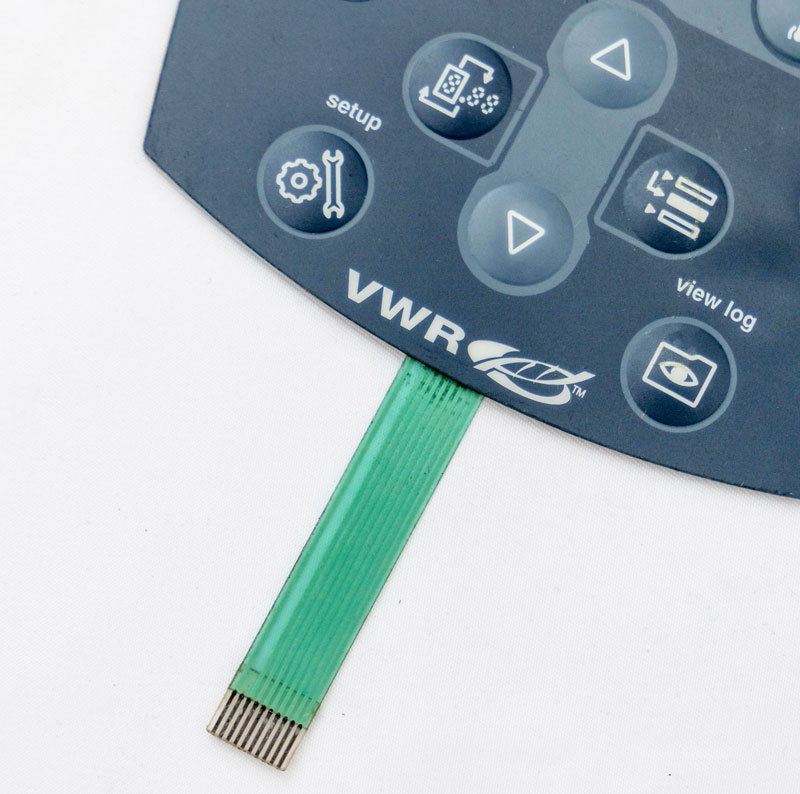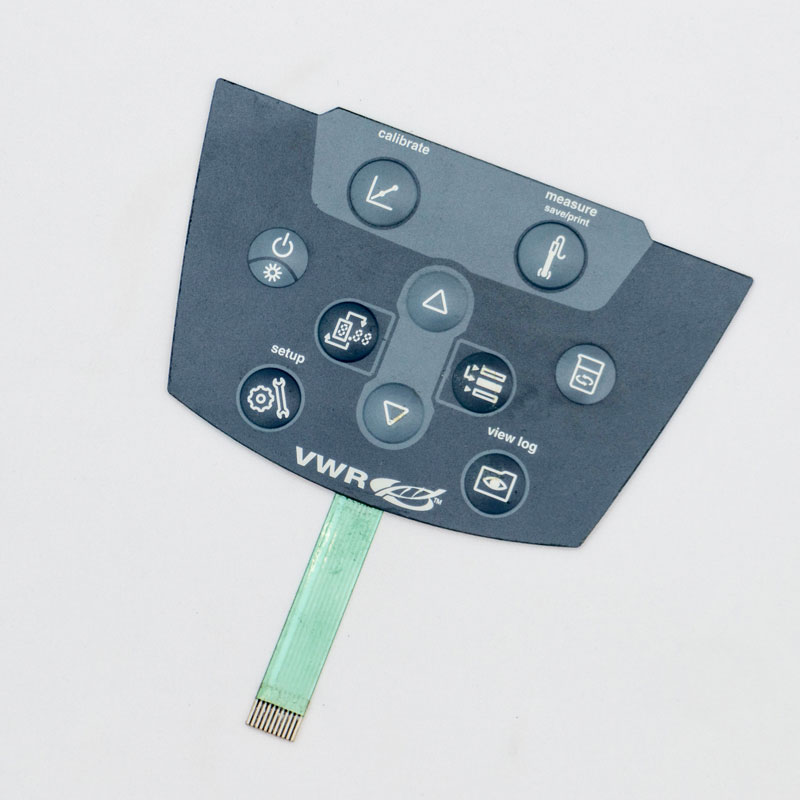Membrane switches are an essential component of modern electronic devices. They are used in a wide range of applications, from consumer electronics to medical devices and industrial control systems. As such, they are subject to rigorous quality control and testing to ensure they meet the required standards. In this article, we will explore the various aspects of quality control and testing for membrane switches.



Before we delve into the topic of quality control and testing, let's take a moment to understand what membrane switches are. A membrane switch is a type of electrical switch that is used to turn a circuit on or off. It consists of several layers of flexible material, including a top membrane layer, a spacer layer, and a bottom membrane layer. When pressure is applied to the top membrane layer, it activates a switch that completes a circuit and turns a device on or off.
Quality control and testing are critical for ensuring that custom membrane switches are reliable and perform as intended. Without proper quality control and testing, membrane switches can fail prematurely, leading to costly repairs or replacements. In addition, faulty membrane switches can pose a safety hazard in some applications, such as medical devices or industrial control systems.
The quality control process for membrane switches, including custom membrane keyboard, typically involves several stages, including material inspection, printing, assembly, and final testing. Each stage has its own set of quality control procedures to ensure that the membrane switch meets the required standards.
Material Inspection
The first stage of the quality control process is material inspection. This involves checking the quality of the raw materials that will be used to manufacture the membrane switch. The raw materials are inspected for defects, such as wrinkles, scratches, or other imperfections that could affect the performance of the switch.
Printing
The next stage of the quality control process is printing. This involves printing the graphics and text onto the top membrane layer of the switch. The printing process is closely monitored to ensure that the graphics and text are legible and that there are no smudges or other defects.
Assembly
The assembly stage involves laminating the layers of the switch together and adding any additional components, such as LEDs or connectors. The assembly process is closely monitored to ensure that the layers are properly aligned and that there are no air bubbles or other defects.
Final Testing
The final stage of the quality control process is final testing. This involves testing the membrane switch to ensure that it functions as intended. The switch is typically subjected to a series of tests, including electrical continuity testing, actuation force testing, and environmental testing. Any defects or issues are identified and corrected before the switch is approved for use.
In addition to the quality control process, membrane switches are also subject to testing to ensure that they meet the required standards. There are several types of tests that are commonly used for membrane switches, including:
Electrical Continuity Testing
Electrical continuity testing is used to ensure that the membrane switch is conducting electricity as intended. This test involves measuring the resistance of the switch to ensure that it falls within the required range.
Actuation force testing is used to ensure that the membrane switch requires the correct amount of force to activate. This test involves measuring the amount of force required to activate the switch and ensuring that it falls within the required range.
Environmental Testing
Environmental testing is used to ensure that the membrane switch can withstand the conditions it will be subjected to during use. This test involves subjecting the switch to extreme temperatures, humidity, and other environmental factors to ensure that it performs as intended.
Quality control and testing are essential for ensuring the reliability and safety of membrane switches. The quality control process involves several stages, including
the inspection of materials, printing, assembly, and final testing. Each stage has its own set of procedures to ensure that the membrane switch meets the required standards. Additionally, various tests are conducted, including electrical continuity testing, actuation force testing, and environmental testing.
By ensuring that membrane switches meet the required standards, manufacturers can provide their customers with high-quality products that are reliable and perform as intended. This is especially important in industries where safety is a top priority, such as medical devices or industrial control systems.
In conclusion, quality cont rol and testing are critical for the manufacturing of membrane switches. The process ensures that the switches meet the required standards, are reliable, and perform as intended. With proper quality control and testing, manufacturers can provide their customers with high-quality products that meet their needs and ensure safety.
What is a membrane switch?
A membrane switch is a type of electrical switch that is used to turn a circuit on or off. It consists of several layers of flexible material, including a top membrane layer, a spacer layer, and a bottom membrane layer.
Why is quality control important for membrane switches?
Quality control is important for membrane switches to ensure that they are reliable and perform as intended. Without proper quality control, membrane switches can fail prematurely, leading to costly repairs or replacements.
What tests are conducted on membrane switches?
Various tests are conducted on membrane switches, including electrical continuity testing, actuation force testing, and environmental testing. These tests ensure that the switches meet the required standards and are reliable.
What industries use membrane switches?
Membrane switches are used in a wide range of industries, including consumer electronics, medical devices, and industrial control systems.
Can membrane switches be customized?
Yes, membrane switches can be customized to meet the specific needs of the customer. This includes printing graphics and text onto the top membrane layer, adding LEDs or connectors, and other modifications as required.
Note: The above FAQs are not exhaustive, but they provide a brief overview of the topic. If you have additional questions or concerns, please consult with a qualified professional in the industry.
